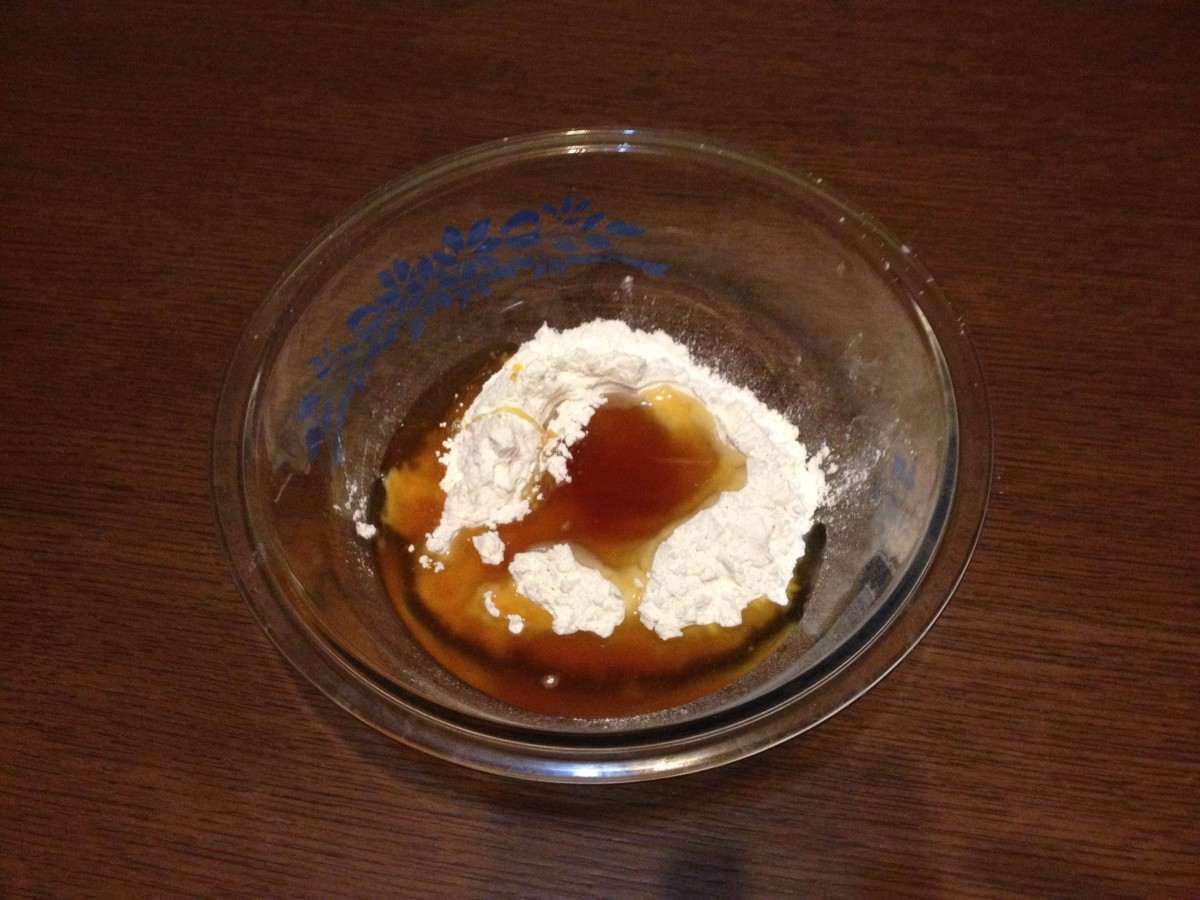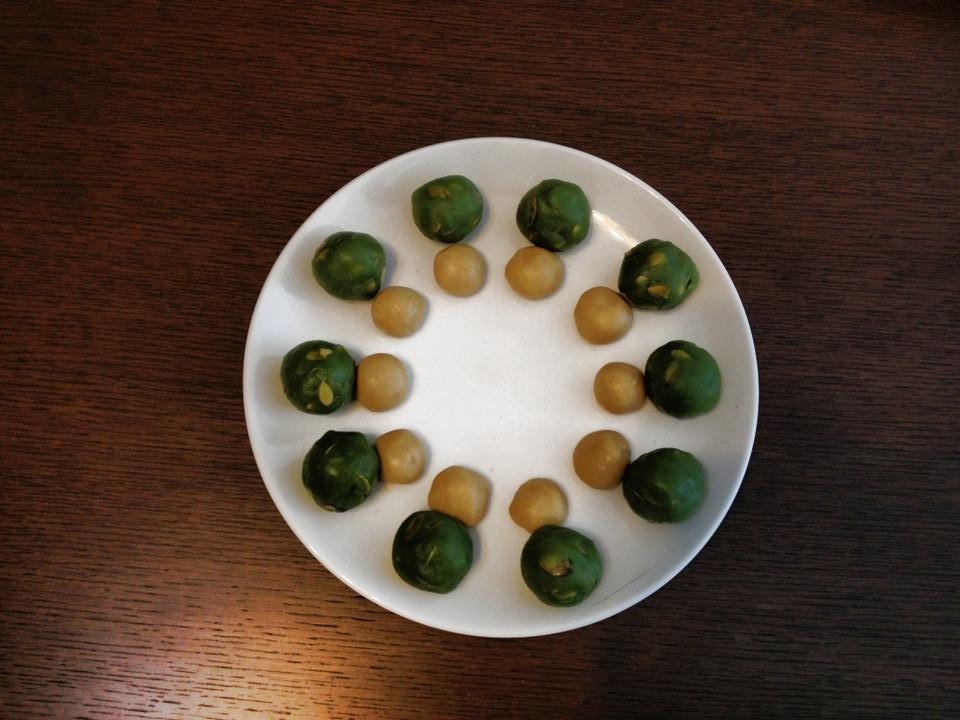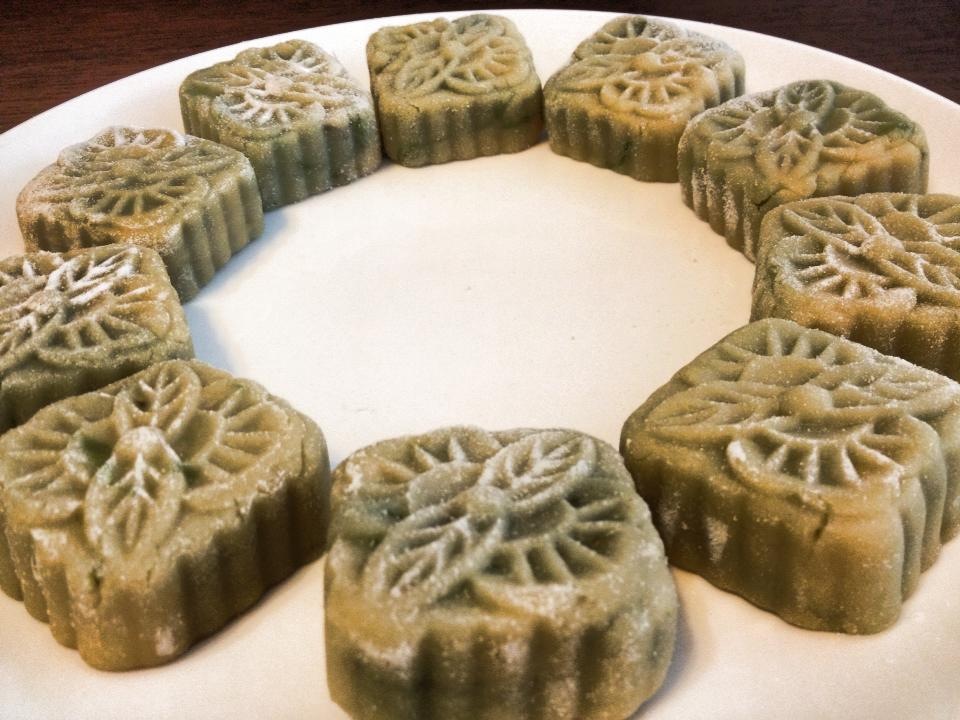In Chinese tradition, families would gather over the Lantern festival eating mooncakes, while admiring the full moon as children played excitedly with lanterns. When I was a child, I had fond memories of walking through the neighbourhood late at night with the other neighbourhood kids, each of us trying to show off our candle-lit paper lanterns which we gingerly held on for dear life, until some young snot around the block came with a Super-Cool battery operated lantern shaped in the coolest cartoon character at the time, putting the rest of our paper lanterns to shame.
I always liked the candle-lit versions better though- they gave me a sense of prized ownership and pride when I returned back home with the paper lantern intact. At times, they would be burned to ashes if I wasn’t careful. My favorite, however, was a big goldfish candlelit lantern my mum had bought for me when I was eight, made with colored cellophane paper and metal wire.
Lantern festival was all about this, and family gatherings round a table of oversweet mooncakes, savoury egg yolks, salty pumpkin seeds and refreshing jasmine tea. In Chinese, this is called “shang yue“. Literally, it means “admiring the moon”.
Lately when we spoke with Grandpa Zhou briefly, he mentioned he had wanted to “shang yue” and eat mooncakes but they were too expensive. Unlike in past years when there was always a Lantern Festival event near his home for him to join with other elderly neighbours, this year was unusually quiet. Over the weekend, as Cliff and I walked through a mall, we saw stall after stall selling all sorts of different mooncakes with exotic flavours, packed side by side like sardines in a tin, trying to convince the passing crowd that their brand of treats made with an inordinate amount of sugar and lard was most worth your $50 per box. That weekend, while Cliff was in deep slumber, I hatched a plan to try my hand at baking the traditional mooncakes ( a healthier version, at least) and inviting Grandpa Zhou over to “shang yue”. Making the matcha snowskin mooncakes with red bean paste in the previous week had given me a little confidence.
Unexpectedly, they were a success!
And more importantly, Grandpa Zhou loved it. Over a home-cooked fried rice dinner and homemade mooncakes with jasmine tea and pumpkin seeds, he sang the famous mandarin oldie “The Moon Represents my Heart” and gave us marriage advice. We had our fill! “Mmm… Not too bad for a first-timer…” he said.
Homemade fried brown rice with salad and tomato & onion omelette
At the end, I had two happy men – Cliff and Grandpa Zhou.
Mission accomplished!
So here’s sharing how to bake these little royal moonies!
There are several up-sides to making your own moonies:
One, they certainly are a lot healthier. Just one traditional mooncake bought outside is half your day’s caloric intake, and contains a whopping 14 teaspoonfuls of sugar and 6 teaspoonfuls of fat. With this recipe I tried, no lard or sugar was used- the sugarless pandan lotus paste was naturally sweet in itself, and tasted wholesomely delicious with the pumpkin seeds and hazelnuts. It makes one wonder who ever thought of adding sugar in the first place!
Two, they bring your family closer together. I don’t even know where to begin when it comes to food being a binding agent. Since I started writing and sharing recipes, it has brought several friends and family closer together. Not to mention Cliff, whose sacrifice in helping me lug home heavy bags of ingredients and his dangerous job of being Royal Food Taster has touched my heart as well. (So far, he reports positive emotional and gustatory effects from the food I prepare, but I’m not sure if life-threatening risks ensue if he continues this high-risk task!) Grandpa Zhou also gladly came to try these home-made babies- he sometimes requires quite a bit of convincing before he’s willing to sacrifice earning more income from busking at the train station.
Three, I daresay after baking moon-cakes you’ll just about set your mind to anything!
So here goes- as I say, as a new and busy wife, I am so not the baker. But if I could do it, I’m pretty sure you can too! Just avoid my blunders! (And it certainly helps heaps if you try making the snowskin version first!)
Food for Love:
With this recipe, I made 13 mini-moonies and 2 large mooncakes.
Divide all the weights by half and you should be able to make at least 10-13 mini moon-cakes.
1. 200g plain flour
2. 100g golden syrup (the recipe calls for 140g, but I find that having just a mild treacly flavour enhances the whole shang yue experience, instead of trying to flush out the overpowering sweetness with tea.)
3. 50ml peanut oil (I used canola)
4. 4ml alkaline water (I got this from Phoon Huat- if you don’t have this, I’ve read you can dissolve baking soda in water. 4ml is a just a little less than 1 tablespoon.)
5. Egg wash , which is simply the golden coat you apply to your half-baked mooncakes if you want them to have that royal glow! Simple whisk a small egg and 1 tablespoon of water and pass it through a fine sieve.
6. 800g of sugarless lotus paste or red bean paste (I used sugarless pandan lotus paste and it tastes wonderful, just like traditional kaya), folded in with 80g pumpkin seeds or hazelnuts. Try macadamia nuts if you’re feeling generous! For the adventurous, try mixing instant coffee powder into white lotus paste for a coffee flavoured mooncake.
For Beauty:
1. Mould: yes, same as the recipe for making the snowskin moon-cakes!
2. Baking paper: this is so important if you want your moon-cakes to be pretty and unspoiled.
3. Sprayer: I didn’t have this- or rather, I, in my delicate womanhood, wrung the sprayer top off with the strength of a brute and broke it. Ha, I used an oil brush instead- you’ll see what this is used for later!
The Act:
1. To make the dough, add golden syrup, alkaline water and oil to combine. I found this golden syrup at the baking store as well.
2. Then pour this into a mixing bowl containing plain flour (make a little well in the centre) and mix and knead it gently for a minute or two to form a soft dough. It is the golden syrup that gives the dough this lightly caramelized color.
Then, envelope it with cling wrap and leave it in the fridge to rest overnight or for at least (I read) 2 hours.
3. Okay! Unlike the snowskin dough which was soft, pliable and altogether cooperative, traditional mooncake dough does have a bit more of its own personality. It is clingy, sticking onto your hands and most surfaces with dogged determination and also cracks easily if overly dusted with flour. What I did was to stamp my palms onto a plate of plain flour, which made the process a lot smoother- no pun intended.
Divide the dough into 15-20g pieces and the filling into 30-35g balls, to fill the 50g mini-mooncake mould.
Then, watch your hands do the magic.
Remember to dust them with flour in between!
And haha… Don’t turn on the fan, unless you want a snowy floor! (Yet another embarrassing blunder…)
You might have a rude shock discovering how hard this dough is compared with the snowskin dough…
But all it needs is a little coaxing…
… and maybe a little patchwork under desperate circumstances to seal the seams.
4. I learnt a painful lesson from hitting the mooncake mould against my palms to knock the snowskin mooncakes out a few days ago. This time, my brain, still sore about the bruise on my left palm, devised what you must think to be a common-sense solution that I should have thought of in the first place- I hit the mould against the edge of the sofa haha (the table edge was too hard). You can also place a piece of cloth on your table edge and knock the mould against it.
They turned out lovelier than expected!
5. Then, I was supposed to spray some water onto the mooncakes before baking to prevent them from cracking but alas, I had killed my sprayer in an inglorious death and so used my trusty oil brush. They turned out fine!
6. So, this is when I confess that baking traditional mooncakes does take a bit of time and effort. With all loving care and concern, bake the little babies in a preheated oven at 160 degrees for about 10 minutes on a lower middle level and leave to cool for 10 minutes. Bake again at 150 degrees for about another 10 minutes and cool for 10 minutes.
In between, brush the top and sides gently with egg wash, and read, blog, do some cartwheels.
Watchfully, as if they have finally hit puberty and you need to let go, stop fussing for a bit and simply allow them to bake until golden brown.
8. Supposedly, these hardcore babies need to be left alone to cool completely before being stored in airtight containers for 2-3days for the skin to soften before serving. Heh, actually, Cliff and I really enjoyed the hard crust of the mini-mooncakes, which contrasted nicely with the mushy filling.
To hear 3 of the most important men in my life (Cliff, Dad and Grandpa Zhou)
enjoy these mini delights and lavish their compliments
was delicious in itself.
Enjoy Baking,
and even if you don’t put your hand to this,
consider buying a mooncake for or spending time this Lantern Festival with someone you know
who might be missing some family, some company, and some memories of “shang yue“.
Love.
















Hey Wai Jia. Managed to gather enough courage to visit Zhou Ye Ye today and he really has a lot of stories to tell. Thank you for being able to tell me about him so that i was able to be more courageous when going to him. I would also like to thank you for sharing about your various mission trips in the different parts of the world. One of my dreams is actually to serve in Africa but i don’t think i’m that ready to commit especially since I’m still quite young. hope to see you around when you visit Zhou Ye Ye! 🙂